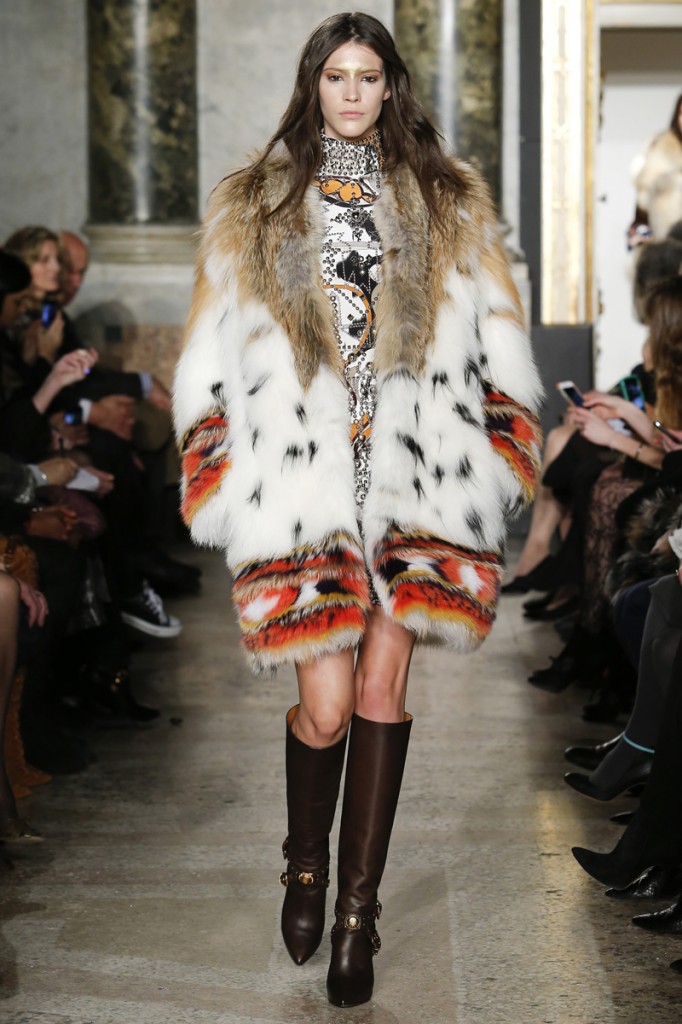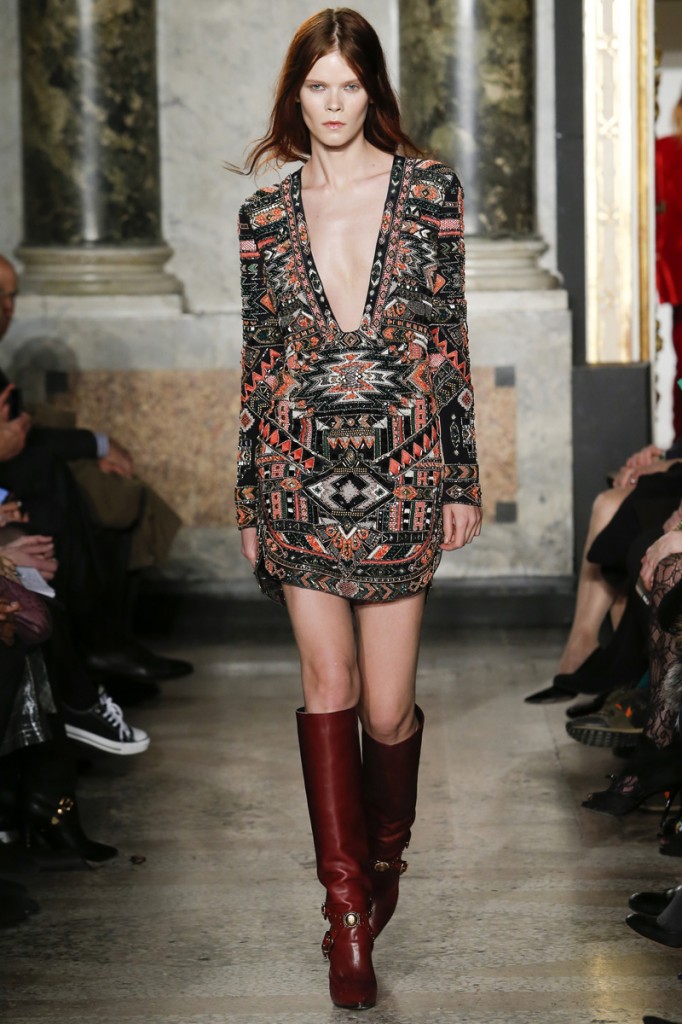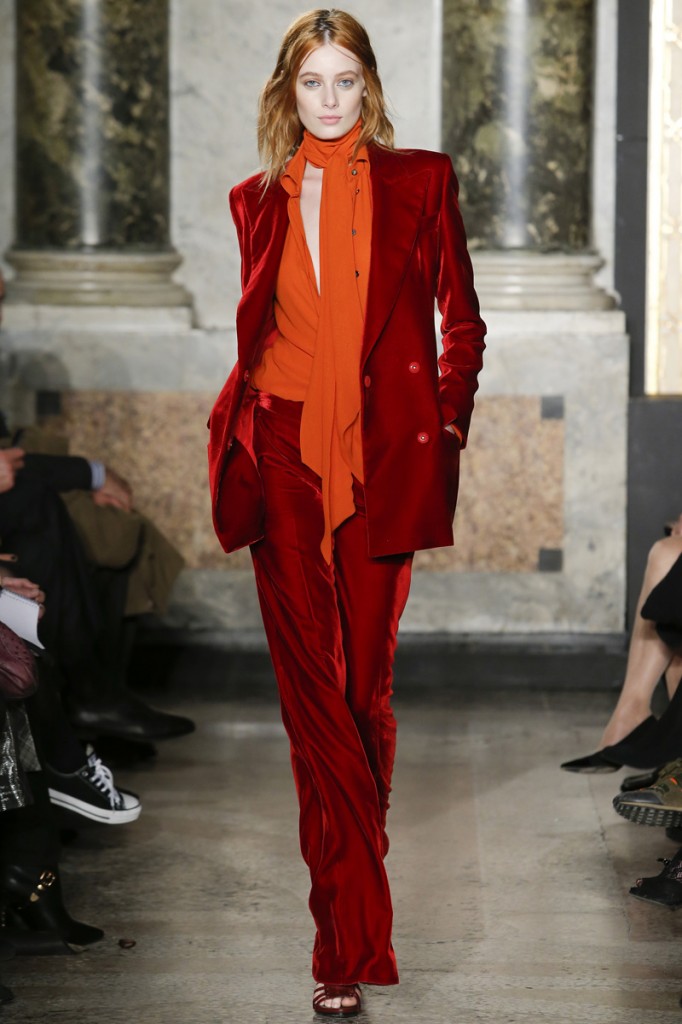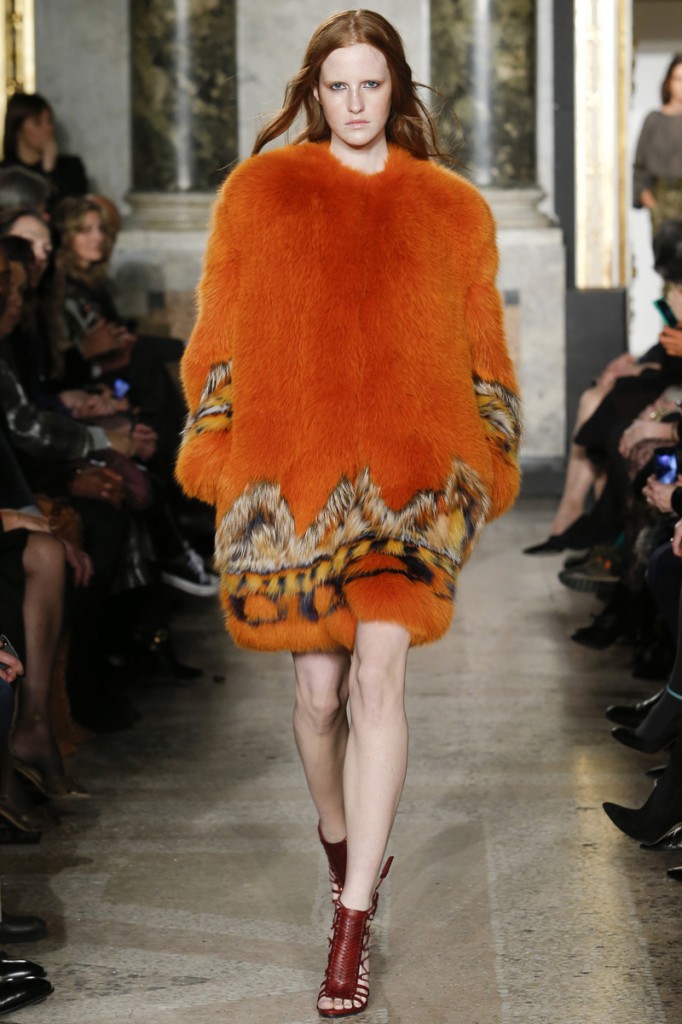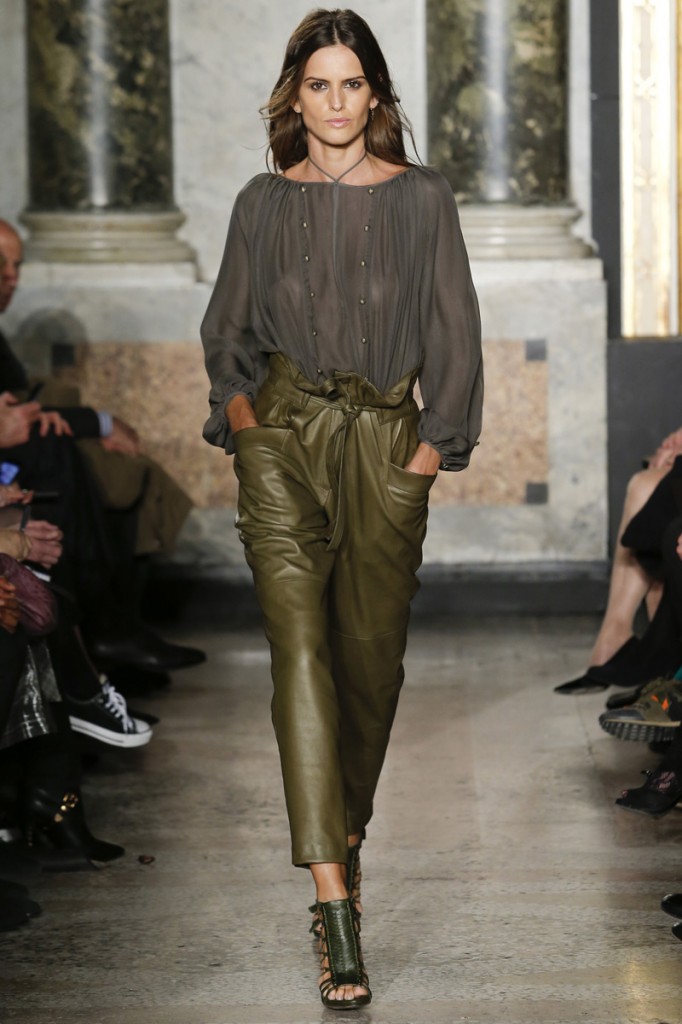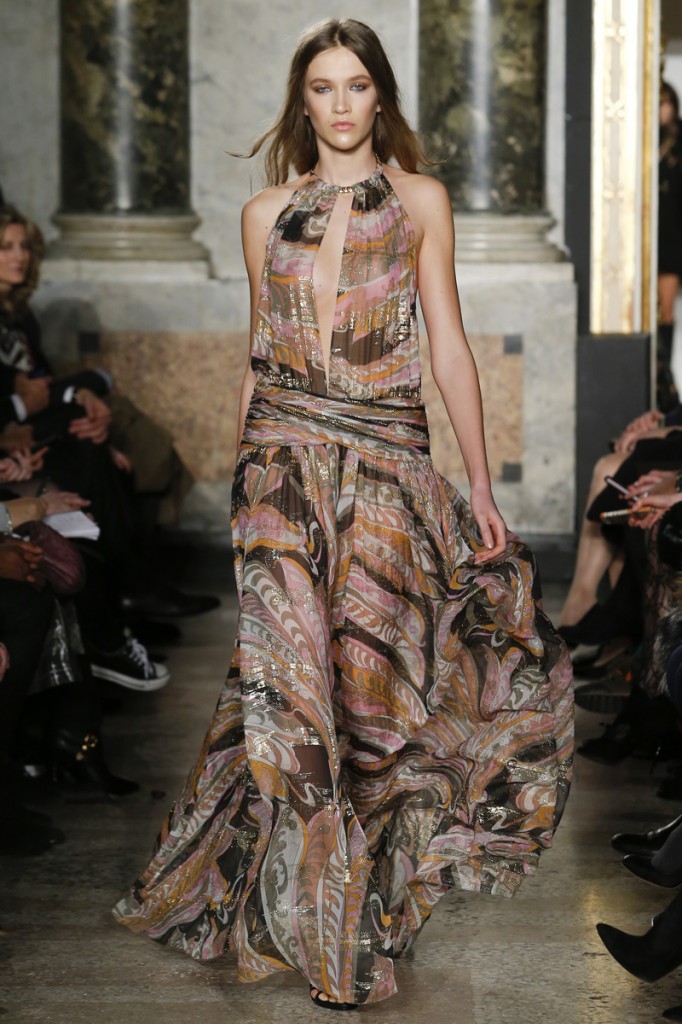INHALE is a cultural platform where artists are presented, where great projects are given credit and readers find inspiration. Think about Inhale as if it were a map: we can help you discover which are the must-see events all over the world, what is happening now in the artistic and cultural world as well as guide you through the latest designers’ products. Inhale interconnects domains that you are interested in, so that you will know all the events, places, galleries, studios that are a must-see. We have a 360 degree overview on art and culture and a passion to share.

One-part Native American, one part Inuit, one part American Hustle—and all of it skimpy, slinky, sexy, ultra-sizzling, slightly seventies stuff. Fashion is always skating on thin ice when it starts naming indigenous peoples as inspiration, one would have to say. But by the time Peter Dundas had whizzed the blankets, ponchos, furs, and cowhides through the blender, thrown in a hip-hop slash rocker sensibility, silver studs, and a pink-brown Emilio Pucci vintage print, well, you could hardly trace the origins if you tried. (Oh: the two stunning silk velvet pantsuits, one fiery red, the other deep green—they were the Hustle moments.)
Dundas has certainly made over Pucci in his own image since he became creative director. Now the house product is all about girls, body-display, going out, dancing, and causing a stir. Noticeably, there is nothing in the slightest medium, moderated, or everyday in this world. Dresses are either very short, or very long—and either way, they’re there to showcase plenty of flesh. Admittedly, there’s chunky outerwear—a big, fluffy coat which is patchworked to look like lynx (but definitely isn’t), and beaver-lined parkas (the Inuit influence). And then, quite cozy blanket-patterned ponchos and cardigan jackets, along with substantial cow-print leathers.
Still, an equal wonder is just how Dundas gets away with all this without being tacky. It can’t be easy when you’ve opted to dedicate yourself to a life of putting legs and cleavage on display, but the quality of Dundas’s fabrics, like the papery lamé, with a subtle rendering of the signature Pucci Orchidea print, as well as his exceptional talent for fit, made it all come over as a class act.Under the creative directorship of the Norwegian-American Dundas, the Florentine print house (it’s a palazzo, actually) has gone places which couldn’t possibly have been imagined in the time of its aristocratic founder, Emilio Pucci.
via vogue.com



